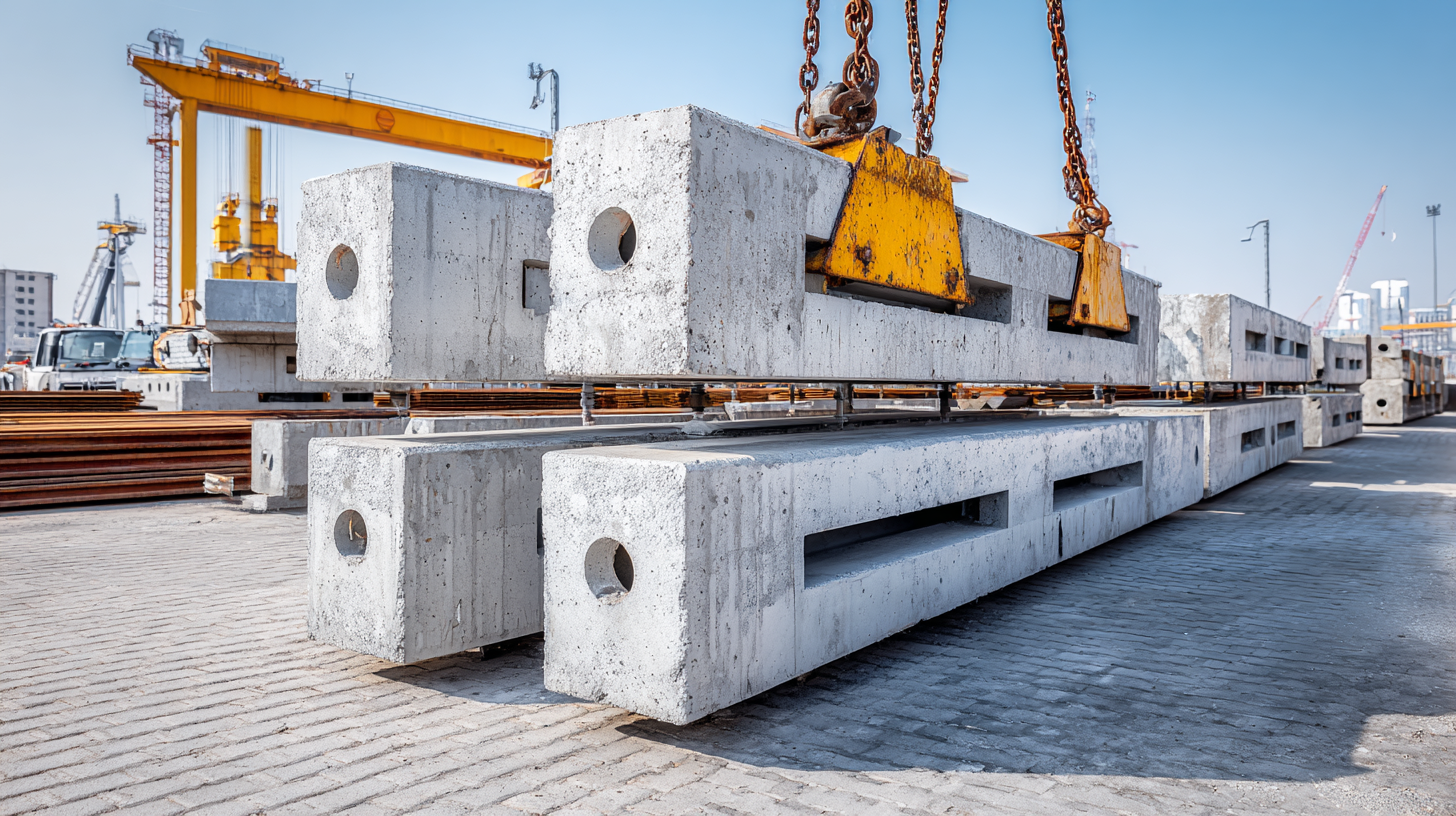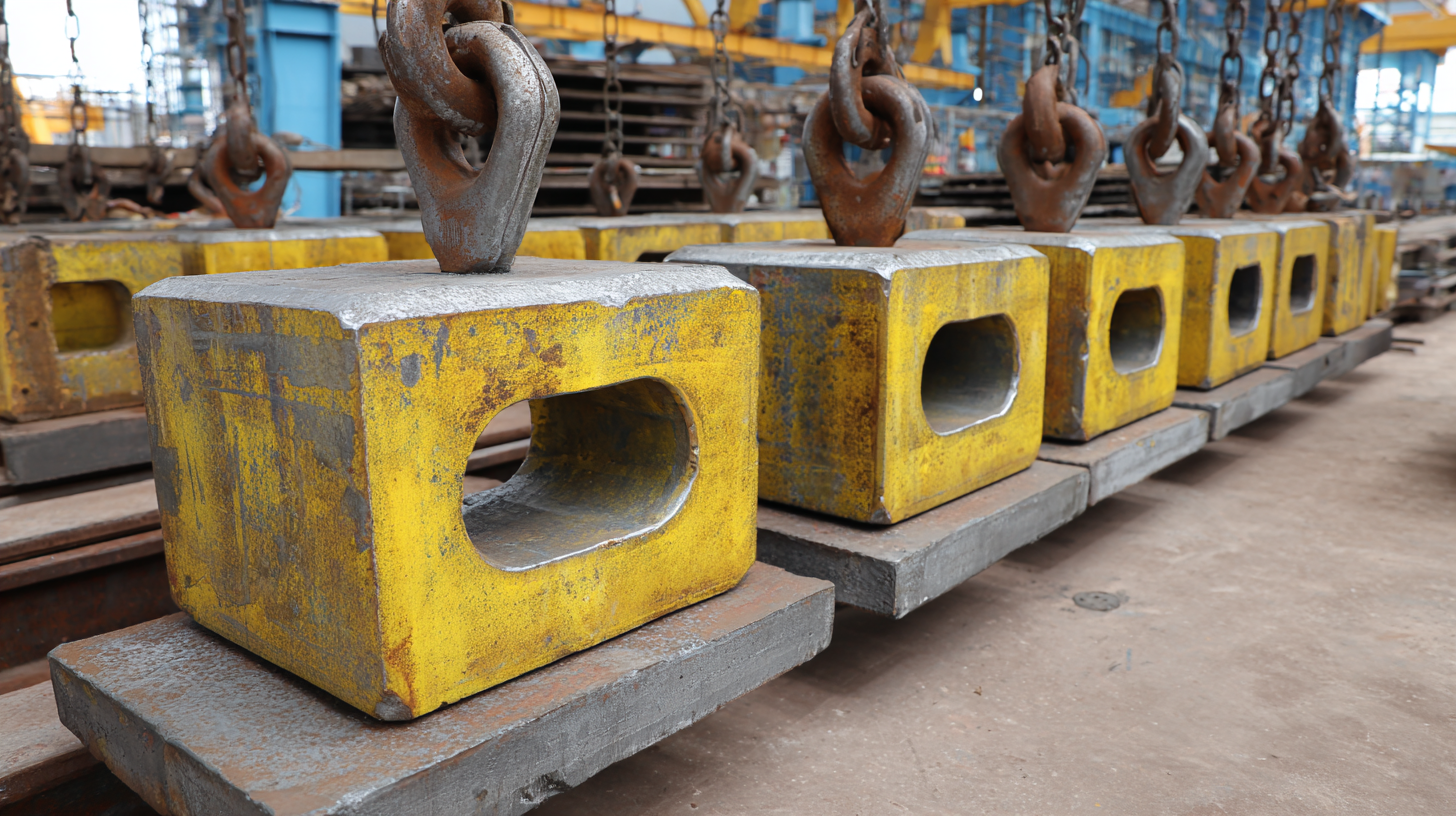In the rapidly evolving construction industry, precast concrete lifting eyes have become essential for efficient handling and installation of precast components. According to a recent report by Grand View Research, the global precast concrete market is expected to reach USD 200 billion by 2027, underscoring the growing reliance on these innovative solutions. However, as the demand increases, so too do the challenges faced by global buyers, including variations in quality and standards among manufacturers. This necessitates a comprehensive understanding of how to choose a reputable supplier that meets industry specifications. This blog aims to explore common issues surrounding precast concrete lifting eyes and provide valuable insights into selecting high-quality manufacturers that can ensure safety and reliability in construction projects.

When selecting precast concrete lifting eyes manufacturers, there are several key factors that global buyers should consider to ensure quality and reliability. First and foremost, it is essential to evaluate the manufacturer's compliance with international safety standards, such as those set by the American Concrete Institute (ACI) and the International Organization for Standardization (ISO). Companies that adhere to these standards demonstrate their commitment to producing safe and durable products. According to a recent industry report, manufacturers with certified quality management systems saw a 30% reduction in product failures, underscoring the importance of alignment with industry standards.
Another critical aspect is the manufacturer's experience and reputation within the industry. Long-standing companies are likely to have developed effective production processes and strong supplier relationships. In fact, a survey by the Precast/Prestressed Concrete Institute (PCI) revealed that 65% of industry professionals prefer to work with manufacturers who have over ten years of experience. It is also advisable to seek out manufacturers who can provide detailed case studies and testimonials from previous clients, showcasing their successful projects.
Tips: Always request samples or product demonstrations before making a bulk order, as this can help verify the quality of the lifting eyes. Additionally, consider the manufacturer’s lead times; prompt delivery can significantly impact your project's progress and success.
Precast concrete lifting eyes are essential components used in the handling and transportation of concrete elements. They come in various types, each designed for specific applications to enhance safety and efficiency. The most common types include loop lifting eyes, bolt-on lifting eyes, and welded lifting eyes. Loop lifting eyes are versatile and often used for lifting panels and heavy blocks, as they provide a secure grip and distribute weight evenly. Their design makes them ideal for projects requiring repeated lifting cycles without wear and tear.
Bolt-on lifting eyes, as the name suggests, are attached using bolts, making them suitable for applications where a strong permanent attachment is necessary. They are commonly employed in precast elements like beams and slabs, which require robust lifting solutions during transportation. On the other hand, welded lifting eyes are typically integrated directly into the concrete during the casting process, providing a permanent solution that reduces the risk of detached lifting devices. Each type of lifting eye not only enhances operational safety but is also crucial for maintaining the structural integrity of the precast elements during lifting, transportation, and installation.
| Type of Lifting Eye | Material | Load Capacity (ton) | Common Applications | Common Issues |
|---|---|---|---|---|
| Standard Lifting Eye | Steel | 5 | Concrete panels, blocks | Corrosion, incorrect fitting |
| Twin Lifting Eye | High-strength Steel | 10 | Heavy slabs, wall panels | Misalignment, fatigue failure |
| Recessed Lifting Eye | Stainless Steel | 3 | Architectural features | Limited access, installation errors |
| Hook Type Lifting Eye | Forged Steel | 7 | Precast beams, columns | Hook deformation, latching issues |
| Adjustable Lifting Eye | Mild Steel | 8 | Versatile lifting solutions | Complexity in use, wear and tear |
 When selecting precast concrete lifting eyes, global buyers must prioritize key quality indicators to ensure safety and efficiency. One of the most critical factors is the material used in manufacturing the lifting eyes. High-quality materials, such as high-strength steel, significantly enhance durability and load-bearing capacity. Buyers should look for products that conform to international standards to ensure reliability under various conditions. Furthermore, the lifting eyes should undergo rigorous testing to validate their strength and performance, minimizing the risk of operational failures in the field.
When selecting precast concrete lifting eyes, global buyers must prioritize key quality indicators to ensure safety and efficiency. One of the most critical factors is the material used in manufacturing the lifting eyes. High-quality materials, such as high-strength steel, significantly enhance durability and load-bearing capacity. Buyers should look for products that conform to international standards to ensure reliability under various conditions. Furthermore, the lifting eyes should undergo rigorous testing to validate their strength and performance, minimizing the risk of operational failures in the field.
Another vital quality indicator is the design and engineering of the lifting eyes. A well-engineered lifting eye should facilitate ease of use while maintaining structural integrity. Features such as proper load distribution and the inclusion of safety factors are essential. Global buyers should pay attention to the specifications provided by manufacturers, ensuring that they meet the load requirements for the specific applications. By focusing on these quality indicators, buyers can minimize risks and enhance the overall efficiency of their precast concrete operations.
When selecting precast concrete lifting eyes, customer feedback plays a pivotal role in guiding global buyers toward making informed choices. According to a 2022 industry report by Precast Concrete Manufacturers Association, approximately 78% of buyers consider customer reviews as one of the most significant factors influencing their purchasing decisions. Not only do these testimonials provide insight into product reliability and quality, but they also highlight common issues such as the risk of lifting eye failures and maintenance challenges that can arise under heavy use.
Additionally, many buyers rely on platforms like Construction Industry Review and building trade magazines to gauge the experiences of others in the field. A survey conducted in 2023 revealed that 65% of contractors had experienced complications with lifting eyes during project execution. This data underscores the importance of leveraging customer reviews to avoid vendors with poor track records in reliability, ultimately enhancing project safety and efficiency. Therefore, recognizing customer insights should be an integral part of evaluating the best precast concrete lifting eyes, as it significantly affects both project outcomes and client satisfaction.
When selecting precast concrete lifting eyes, global buyers must prioritize verifying manufacturer credentials and adhering to industry standards. According to a recent report by the Precast/Prestressed Concrete Institute (PCI), nearly 40% of quality issues in precast products stem from inadequate oversight of manufacturing processes. This statistic underscores the importance of ensuring that producers are certified and compliant with recognized standards such as ASTM and ISO.

To effectively assess a manufacturer’s credentials, buyers should request documentation proving adherence to these standards. The PCI indicates that manufacturers who are PCI-certified have demonstrated a commitment to quality practices that significantly reduce the likelihood of defects. Additionally, buyers should look for manufacturers who maintain third-party quality assurance programs; such verification serves as an added layer of reliability. By engaging in due diligence and insisting on stringent manufacturing and inspection practices, buyers can mitigate risks associated with subpar lifting eye products, ultimately protecting their investments and project integrity.
